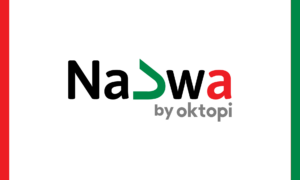With the rise of online teaching, a lot of educators find themselves wanting to teach, coach, or tutor online but struggle with finding the right way to start. We’ve combined a few tips to give you the method and confidence to start your online course:
1. Identify your target learner
An advantage that schools normally provide is already having students. Finding learners online can seem overwhelming, but identifying your target learner is the first step to get there.
By trying to reach everyone, you won’t attract the right learners for your course, which is why you need to think about the type of learners you want to attract. You can do that by asking target defining questions: Who are these learners ? Are they young learners or adults? Beginners or advanced? What are their interests? What changes do they want in their lives? Where do they want to be in 5 years?
By finding the answers to these questions, you can create a profile of the learners you’re targeting. Knowing who you want to address in your course will allow you to create specified content and find ways to promote it that will answer these learners’ needs and interests.
2. Diversify the format of your lessons
Getting information is important, but using it to your advantage is critical action! What type of material will suit your learners best? How will you personally do something different to help them?
Everyone learns differently, and not all learners will enjoy one specific format. To ensure you’re providing diversified content that is engaging for everyone, try to use different types of resources such as presentations, videos, and social media content, podcasts, and documents to support their learning journeys. You should also try to adapt to your learners’ needs as you go. Don’t be afraid to be flexible and change your lessons depending on your learners’ pace and capabilities. The session format of your lessons can also be different- for example, some lessons can be a pre-recorded video and a quiz learners can do in their own time, while others can be more interactive like a Q&A session or peer-based to work together on an activity- to keep learning interesting and figure out what works best for that cohort. Creating a safe and comfortable learning environment is also essential. Listen to your learners and make them feel heard. Answer their questions and be involved and accessible by providing them with your time and input; using live video, text chat, and voice note features on oktopi can help facilitate these conversations with learners
3. Link your lesson material to learning objectives
Learning objectives provide learners with a clear purpose on which to focus their learning efforts. When learning objectives are explicitly articulated to learners, they know what is expected of them precisely. They can then use objectives to guide and direct their study methods, focus on certain content, and make sure they’re able to reach them through specific activities and exercises. This will give learners a more active role in learning and allow them to self-evaluate throughout the course.
Setting learning objectives first and working backward enables educators to identify the kinds of materials and topics that will be most suitable to intended learning outcomes.
Learning objectives also facilitate assessment by helping the educator define their testing and assessment strategies, and can form the basis for grading or determining levels of learners’ achievement.
4. Include projects or assignments
Once you’ve set your learning objectives and know what to expect from your learners, you can use the objectives as a base for grading or determining the levels of the learner’s achievement. Giving them a project or an assignment can help you assess their learning and make sure they’ve understood the content and have achieved the objectives you’ve set.
5. Plan prompts to encourage discussions
While questions, discussions, and interactions usually happen on the spot, planning them in advance can ensure your lessons stay engaging and allow the learners to retain information in an interactive way. You should ask yourself what kind of questions should you ask and why are they important? When would be the best time to ask them: during the lesson or before the next lesson?
You can also plan to post stories on your oktopi course that learners can see and interact with, and they can reply to them by posting their own stories as well. This will create a fun conversation around the lesson material, encourage discussions and get the learners more interested in the subject.













